Water Supply Systems: Past, Present Challenges, and Future Sustainability Prospects
Abstract
1. Prolegomena
By studying ancient civilizations, we study ourselves and learn from the past about the present and the future.(Andreas N. Angelakis)
2. Prehistoric to Medieval Times (ca 10,000 BC–1350 AD)
2.1. Prehistorical Time in Anatolia (ca 10,000–1200 BC)
2.2. Minoan and Mycenaean Civilizations (ca 3200–1100 BC)
2.3. Indus Valley Civilization (ca 3200–1300 BC)
2.4. Ancient Egypt (ca 3100–30 BC)
2.5. India: Vedic Period (ca 1500–500 BC)
2.6. Hittite Empire in Minor Asia (Anatolia) (ca 1750–860 BC)
2.7. Urartu Period in Minor Asia (Anatolia) (ca 860–675 BC)
2.8. Carthaginian Empire (ca 814–146 BC)
2.9. Archaic, Classical, and Hellenistic Periods (ca 750–31 BC)
2.10. Minor Asia (Anatolia) (ca 675–133 BC)
2.11. Mauryan Empire (ca 321–185 BC)
2.12. Roman Period (ca 31 BC-480 AD)
2.12.1. Roman and Byzantine Period in Minor Asia (Anatolia) (ca 133 BC to 395 AD)
2.12.2. Roman North Africa (ca 146 BC–7th Century AD)
2.13. Sasanian Empire (ca 224 AD–651 AD)
2.14. Seljuks Turks in Minor Asia (Anatolia) (1000–1299 AD)
2.15. Great Zimbabwe (ca 1100–1500 AD)
Urban Planning
3. Early and Mid-Modern Times (ca 1350–1750 AD)
3.1. Incas in South America (1438–1572 AD)
3.2. Renaissance in Baroque Europe (ca 1350–1750)
3.3. Renaissance in India (ca 1350–1750)
3.4. Ottoman Period (1300–1923 AD)
4. Contemporary Times (1750–Present)
4.1. Enlightenment, Europe and America (ca 1750–1800)
4.2. British India (ca 1750–1900 AD)
5. Knowledge Transfer and Technological Exchange in Water Management
6. Emerging Trends and Possible Future Challenges
6.1. Growing Population and Urbanization
6.2. Energy Consumption Issues and Greenhouse Gas (GHGs) Emissions
6.3. Addressing Challenges in Urban Water Planning
6.4. Urban Planning and Sustainable Development Goals (SDGs)
6.5. Historical Practices for Addressing Current Urban Water Challenges
- (a)
- The evolution of science and engineering is not linear but rather characterized by discontinuities and regressions. On the other hand, it is not “Markovian” in the sense that only the present (i.e., the state at a certain time instant) and not the past (i.e., the entire history) influences the future. “Bridges” from the past to the future are always present, albeit sometimes invisible in the present. Thus, in addition to many constructions that have been continuously or intermittently in operation up to the present day, written information from ancient Greece has survived [165].
- (b)
- Water progress. To some extent, there are differences in the apparatus and the scale of applications and not differences in the fundamental principles used. Even the lifestyle related to the hygienic standards of the civilization may not be a recent development. For example, flushing toilets equipped with seats, which resembled present-day toilets and were drained by sewers, existed from the Minoan times (e.g., in the Knossos palace [166]). The essential progress of modern times stems from a better understanding of and better equipment from hydraulics, which allows for the better design and management of hydraulic works, mainly in larger scales of application.
- (c)
- Water Philosophy. Today, engineers typically use a design period of structures of about 40 to 50 years, which is related to economic considerations. It is difficult to infer the design principles of ancient engineers. Nevertheless, it is notable that several ancient works have operated for very long periods until contemporary times. For example, the most advanced ancient Minoan drainage system seems to be that in the villa of Phaistos. This system was admired by several visitors, including the Italian writer A. Mosso (1907) [167], who visited the area in the early 20th century. During a heavy rain, he noticed that the pipes functioned perfectly, and he recorded the incident, saying the following: I doubt if there is other case of stormwater drainage system that works 4000 years after its construction. Also, the American H. F. Gray (1940) [168] said the following: you can enable us to doubt whether the modern sewerage and drainage systems will operate at even a thousand years. Thereafter, the Peisistratean aqueduct constructed in Archaic period is still in operation today in some way for the irrigation of the National Garden in the center of Athens. Also, water for the modern city of Athens was supplied primarily by the Hadrianian aqueduct up to the 1920s and partly until the 1950s [72,169].
- (d)
- Management Principles. The Athenian example described earlier manifests admirable balances among the following: (i) structural and nonstructural (institutional) measures; (ii) large-scale (e.g., the Peisistratean aqueduct) and small-scale (wells and cisterns) projects; (iii) interests of the public (for large-scale works) and the private (for small-scale works) sectors. The latter is apparent even in Solon’s regulation, whose ultimate purpose was to balance public and private interest for the construction and operation of wells [72]. Today, similar solutions are often sought both in developed and developing countries as neither the public nor the private sector alone can provide sustainable solutions for water supply.
6.6. Study Limitations and Future Research Directions
7. Epilogue
Author Contributions
Funding
Data Availability Statement
Conflicts of Interest
Appendix A. Summary Comparing Key Water Management Features Across Different Civilizations
| Civilization | Water Source | Water Supply Systems | Agricultural Irrigation | Sanitation & Drainage | Notable Features |
|---|---|---|---|---|---|
| Minoans (ca 3200–1100 BC) | Local Springs, rainwater | Aqueducts, conduits | Rainwater harvesting, small-scale irrigation | Underground drains | Early hydrostatic principles in urban water supply |
| Egyptians (ca 3100–30 BC) | Nile River | Canals, reservoirs | Basin irrigation, shadufs | Drainage channels, basic sewerage | Large-scale water storage and flood control |
| Mesopotamians (ca 3000–539 BC) | Rivers (Tigris, Euphrates) | Canals, underground channels | Large-scale irrigation networks | Underground drains | First known large-scale irrigation systems |
| Indus Valley (ca 2600–1900 BC) | Wells, rivers | Stepwells, reservoirs | Extensive irrigation | Covered drains, soak pits | Advanced urban sanitation, Great Bath |
| Ancient Greeks (ca 750–31 BC) | Local Springs, wells | Cisterns, aqueducts | Limited irrigation, rainwater storage | Street drainage, underground sewers | Water management integrated into urban planning |
| Assyria (ca 703–690 BC) | Springs, rainwater | Open channels, subterranean tunnels | Extensive irrigation and urban water supply systems | Drainage channels, basic sewerage | Optimizing water flow, incorporating elements such as sluice gates and settling basins to regulate and purify the water |
| Romans (ca 31 BC-476 AD) | Distant Springs, rivers | Aqueducts, lead pipes | Irrigation canals | Underground sewers (Cloaca Maxima) | Large-scale public baths and fountains |
| Carthaginians (ca 814–146 BC) | Distant Springs, rainwater | Aqueducts, cisterns | Limited agriculture-focused irrigation | Urban drainage | Advanced cistern storage systems |
| Gupta Empire (ca 320–550 AD) | Wells, rainwater | Stepwells, tanks | Reservoir-based irrigation | Street drains, soak pits | Urban water storage and community management |
| Mughals (ca 1526–1857 AD) | Rivers, wells | Canals, reservoirs | Canal-based irrigation, Persian qanats | Community-managed wells | Large-scale canal networks for agriculture |
| Incas (ca 1438–1572 AD) | Springs, revers | Aqueducts | Extensive irrigation | Street drains and sewers | Large-scale irrigation systems |
| Ottoman (ca1300–1923 AD) | Wells, Distant Springs, rivers | Aqueducts, Canals, reservoirs fountains | Qmats, irrigation, rainwater | Limited drains and sewers, hamamams | Agricultural irrigation systems, water storage |
References
- Pektezel, H. City and Water Resources, 1st ed.; Pegem Akademi: Ankara, Turkey, 2015; Available online: https://www.researchgate.net/publication/304900788_Kent_Ve_Su_Kaynaklari (accessed on 10 January 2025). (In Turkish)
- Oktay, H.E.; Erdoğan, R.; Oktay, F.B. City and water. İnönü Univ. J. Art. Des. 2015, 5, 119–125. (In Turkish) [Google Scholar]
- Şahinalp, M.S. Factors influencing the establishment of the city of Şanlıurfa. J. Geogr. Sci. 2006, 4, 105–127. (In Turkish) [Google Scholar] [CrossRef]
- McGrane, S.J. Impacts of urbanisation on hydrological and water quality dynamics, and urban water management: A review. Hydrol. Sci. J. 2016, 61, 2295–2311. [Google Scholar] [CrossRef]
- Kılıç, Y. The first cities of Anatolia. In Proceedings of the 1st International Congress on Social Sciences Research (Papers Sarajevo), Bosnia, Herzegovina, 4–5 May 2015; Available online: https://hdl.handle.net/11499/709 (accessed on 12 October 2024). (In Turkish).
- Guimarães, L.F.; Teixeira, F.C.; Pereira, J.N.; Becker, B.R.; Oliveira, A.K.B.; Lima, A.F.; Veról, A.P.; Miguez, A.G. The challenges of urban river restoration and the proposition of a framework towards river restoration goals. J. Clean. Prod. 2021, 316, 128330. [Google Scholar] [CrossRef]
- Capodaglio, A.G. Urban Water Supply Sustainability and Resilience Under Climate Variability: Innovative Paradigms, Approaches and Technologies. ACS EST Water 2024, 4, 5185–5206. [Google Scholar] [CrossRef]
- Angelakis, A.; Voudouris, K.; Tchobanoglous, G. Evolution of water supplies in the Hellenic world focusing on water treatment and modern parallels. Water Supply 2020, 20, 773–786. [Google Scholar] [CrossRef]
- Thompson, R.C. The Epic of Gilgamesh; Blurb: San Francisco, CA, USA, 2018. [Google Scholar]
- Anatolian Civilization. Çatalhöyük. Available online: https://www.anadoluuygarliklari.com/anadolu-da-ilk-yerlesimler/catalhoyuk (accessed on 15 December 2024). (In Turkish).
- Kejanlı, T. The first settlements and urbanization tendencies in Anatolia. Fırat Univ. J. East. Res. 2005, 4, 89–97. (In Turkish) [Google Scholar]
- Kozanoğlu, H. Traces of Water in Anatolia. Aski General Directorate Publications, Ankara Metropolitan Municipality. Ankara. 2013. Available online: https://yayinlar.aski.gov.tr (accessed on 15 December 2024). (In Turkish)
- Bildirici, M. Pressurized and Non-Pressurized Pipes in Water Conveyance in the Classical Age. Turkish Engineering News, Sayı: 420-421-422. 2002. Available online: https://eski.imo.org.tr/ekutuphane/index.php?yayinkod=21&belgeadi=T%FCrkiye%20M%FChendislik%20Haberleri (accessed on 12 October 2024). (In Turkish).
- Özdemir, M. A section of Neolithic Anatolian architecture: Çayönü. Hist. Future J. 2017, 3, 248–265. (In Turkish) [Google Scholar] [CrossRef]
- Bildirici, M. Historical Irrigation, Water Storage Flood Protection Facilities: Technical and Cultural Values. State Hydraulic Works (DSI), Ankara. 2009. Available online: https://dsi.gov.tr/ (accessed on 25 May 2024). (In Turkish)
- Karabatak. Ephesus Ancient City from the Perspective of Urban Planning. 2022. Available online: https://karabatak.org/sehir-planciligi-acisindan-efes-antik-kenti/ (accessed on 20 November 2024). (In Turkish).
- Baykan, N.O.; Baykan, N. Water engineering in Anatolia throughout the millennia. In Proceedings of the 4th Water Structures Symposium: Papers, Antalya, Turkey, 19–21 November 2015; pp. 145–156. Available online: https://www.imo.org.tr/TR,89070/4-su-yapilari-sempozyumu.html (accessed on 20 November 2024). (In Turkish).
- Angelakis, A.N.; Spyridakis, S.V. Major urban water and wastewater systems in Minoan Crete, Greece. Water Sci. Technol. Water Supply 2013, 13, 564–573. [Google Scholar] [CrossRef]
- Papit, J.L. Minoan Town Planning. Ph.D. Thesis, Temple University, Philadelphia, PA, USA, 2013. Available online: https://scholarshare.temple.edu/handle/20.500.12613/2096 (accessed on 12 October 2024).
- Burns, A. Ancient Greek water supply and city planning: A study of Syracuse and Acragas. Technol. Cult. 1974, 15, 389–412. [Google Scholar] [CrossRef]
- Yannopoulos, S.; Antoniou, G.; Kaiafa-Saropoulou, M.; Angelakis, A. Historical development of rainwater harvesting and use in Hellas: A preliminary review. Water Sci. Technol. Water Supply 2017, 17, 1022–1034. [Google Scholar] [CrossRef]
- Mantellini, S.; Picotti, V.; Al-Hussainy, A.; Marchetti, N.; Zaina, F. Development of water management strategies in southern Mesopotamia during the fourth and third millennium B.C.E. Geoarchaeology 2024, 39, 268–299. [Google Scholar] [CrossRef]
- Angelakis, A. Evolution of rainwater harvesting and use in Crete, Hellas, through the millennia. Water Sci. Technol. Water Supply 2016, 16, 1624–1638. [Google Scholar] [CrossRef]
- Evans, A. The Palace of Minos at Knossos: A Comparative Account of the Successive Stages of the Early Cretan Civilization as Illustrated by the Discoveries; Macmillan Co., Ltd.: London, UK, 1921; Volume I. [Google Scholar]
- Hutchinson, R.W. Prehistoric town planning in Crete. Town Plan. Rev. 1950, 21, 199. [Google Scholar] [CrossRef]
- Davaras, C. The oval house at Chamaizi reconsidered. Arhaiol. Ex Athin. 1972, 2, 283–288. [Google Scholar]
- Cadogan, G. Water management in Minoan Crete, Greece: The two cisterns of one Middle Bronze Age settlement. Water Sci. Technol. Water Supply 2007, 7, 103–111. [Google Scholar] [CrossRef]
- Angelakis, A.N.; Spyridakis, S.V. The status of water resources in Minoan times: A preliminary study. In Diachronic Climatic Impacts on Water Resources: With Emphasis on the Mediterranean Region; Springer: Berlin/Heidelberg, Germany, 1996; pp. 161–191. [Google Scholar]
- Angelakis, A.; Dialynas, M.; Despotakis, V. Evolution of water supply technologies in Crete, Greece through the centuries. Evol. Water Supply Throughout Millenn. 2012, 9, 227–258. [Google Scholar]
- Mays, L.; Antoniou, G.P.; Angelakis, A.N. History of water cisterns: Legacies and lessons. Water 2013, 5, 1916–1940. [Google Scholar] [CrossRef]
- Zheng, X.Y.; Angelakis, A. Chinese and Greek ancient urban hydro-technologies: Similarities and differences. Water Sci. Technol. Water Supply 2018, 18, 2208–2223. [Google Scholar] [CrossRef]
- Driessen, J.; Macdonald, C.F. The Troubled Island: Minoan Crete Before and After the Santorini Eruption; Peeters: Leuven, Belgium, 2020. [Google Scholar]
- Spanakis, S. The Water Supply of Iraklion; The Technical Chamber of Hellas: Iraklion, Greece, 1981; pp. 828–1939. (In Greek) [Google Scholar]
- Angelakis, A.N.; Taroudakis, M.G.T. Thalassocracy in the Bronze Age and Its Relationship to Sustainability. Ann. Archaeol. 2024, 6, 2639–3662. [Google Scholar] [CrossRef]
- Jansen, M. Mohenjo-Daro, Indus Valley Civilization: Water supply and water use ine of the largest Bronze Age cities of the third millennium BC. Geo New World Knowl. 2011, 68–83. [Google Scholar] [CrossRef]
- Singh, R.; Biswal, B. Assessing the impact of climate change on water resources: The challenge posed by a multitude of options. Hydrol. A Chang. World Chall. Model. 2019, 185–204. [Google Scholar] [CrossRef]
- Jarrige, J.-F.; Meadow, R.H. The antecedents of civilization in the Indus Valley. Sci. Am. 1980, 243, 122–137. [Google Scholar] [CrossRef]
- Jansen, M. Water supply and sewage disposal at mohenjo-daro. World Archaeol. 1989, 21, 177–192. [Google Scholar] [CrossRef]
- Bard, K.A. An Introduction to the Archaeology of Ancient Egypt; John Wiley & Sons: Hoboken, NJ, USA, 2015. [Google Scholar]
- Barker, G.; Gilbertson, D. The Archaeology of Drylands: Living at the Margin; Routledge: London, UK, 2003. [Google Scholar]
- Yannopoulos, S.I.; Lyberatos, G.; Theodossiou, N.; Li, W.; Valipour, M.; Tamburrino, A.; Angelakis, A.N. Evolution of water lifting devices (pumps) over the centuries worldwide. Water 2015, 7, 5031–5060. [Google Scholar] [CrossRef]
- Anonymous. Shadoof in Wikipedia. 2024. Available online: https://en.wikipedia.org/wiki/Shadoof (accessed on 22 October 2024).
- Ahmed, A.T.; El Gohary, F.; Tzanakakis, V.A.; Angelakis, A.N. Egyptian and Greek water cultures and hydro-technologies in ancient times. Sustainability 2020, 12, 9760. [Google Scholar] [CrossRef]
- El-Gohary, F.A. Evolution of sanitation and wastewater technologies in Egypt. In Evolution of Sanitation and Wastewater Technologies Through Centuries; Angelakis, A.N., Rose, J.B., Eds.; IWA Publishing: London, UK, 2014; Volume 4, pp. 55–68. [Google Scholar]
- Köpp-Junk, H. Water as a social border in Ancient Egypt. Frontières 2022, 7. [Google Scholar] [CrossRef]
- Driaux, D. Water supply of ancient Egyptian settlements: The role of the state. Overview of a relatively equitable scheme from the Old to New Kingdom (ca 2543–1077 BC). Water Hist. 2016, 8, 43–58. [Google Scholar] [CrossRef]
- Jansen, R.B. Dams from the Beginning; Springer: Berlin, Germany, 2010. [Google Scholar]
- Creswell, K.A.C. Muslim Architecture of Egypt; Hacker Art Books: New York, NY, USA, 1960; Volume 2. [Google Scholar]
- Williams, C. Islamic Monuments in Cairo: The Practical Guide, 7th ed.; The American University in Cairo Press: Cairo, Egypt, 2019. [Google Scholar]
- Witzel, M. The Vedic Age: 1500-500 BCE; Oxford University Press: Oxford, UK, 1995. [Google Scholar]
- Kaur, H.; Babu, M.; Priyadarshini, P. Traces of town planning in vedic and post vedic era-finding the roots. Int. J. Creat. Res. Thoughts 2023, 11, 2320–2882. [Google Scholar]
- Thapar, R. A History of India: Volume 1; Penguin Books: Harmondsworth, Middlesex, UK, 1996; p. 600. ISBN 0140138358/9780140138351. [Google Scholar]
- Thapar, R. Early India: From the Origins to AD 1300; University of California Press: Berkeley, CA, USA; The University of Michigan: Ann Arbor, MI, USA, 2014; p. 596. ISBN 0520238990/9780520238992. [Google Scholar]
- Pargiter, F.E. Ancient Indian Historical Tradition; Motilal Banarsidass. C-DAK; Digital Library of India: Kharagpur, India, 1962; p. 376. ISBN 8120814878, 9788120814875. [Google Scholar]
- Chakrabarti, D.K. India: An Archaeological History; Oxford University Press: Oxford, UK, 1999; p. 374. [Google Scholar]
- Sharma, R.S. India’s Ancient Past; Oxford University Press: Oxford, UK, 2005. [Google Scholar]
- Sharma, R.S. Material Culture and Social Formations in Ancient India; The University of Michigan: Macmillan, India, 2006; p. 246. ISBN 0333904168/9780333904169. [Google Scholar]
- Bloomfield, M. Atharvaveda Samhita; Harvard University Press: Cambridge, MA, USA, 1899; p. 136. Available online: http://resolver.sub.uni-goettingen.de/purl/?gr_elib-230 (accessed on 18 September 2024).
- Goldman, R.P. The Ramayana of Valmiki: An Epic of Ancient India; Princeton University Press: Princeton, NJ, USA, 1990; Volume 1, p. 456. ISBN 9780691014852. [Google Scholar]
- Kosambi, D.D. The Culture and Civilisation of Ancient India in Historical Outline; Routledge: London, UK, 1994. [Google Scholar]
- Salihoğlu, E.F.; Demirarslan, D. Great temple architecture and its effects in Hittite civilization. Hitit Univ. J. Soc. Sci. Inst. 2018, 11, 1761–1779. (In Turkish) [Google Scholar] [CrossRef]
- Özsoy, S. Evaluation of water structures built during the Hittite period in terms of the historical development of science. Mavi Atlas 2017, 5, 489–501. Available online: https://doi.org/10.18795/gumusmaviatlas.351357 (accessed on 12 October 2024). (In Turkish).
- Öziş, Ü. Water works through four millennia in Turkey. Environ. Process. 2015, 2, 559–573. [Google Scholar] [CrossRef]
- Lancel, S. Carthage: A history; Blackwell: Oxford, UK, 1995; 474p. [Google Scholar]
- Picard, G.C. The Life and Death of Carthage; Taplinger Pub. Co., Ltd.: New York, NY, USA, 1969; 362p. [Google Scholar]
- Bunson, M. Encyclopedia of the Roman Empire, Revised ed.; Facts on File: New York, NY, USA, 2002; 636p, ISBN 0816045623. [Google Scholar]
- Zarkadoulas, N.; Koutsoyiannis, D.; Mamassis, N.; Angelakis, A. A brief history of urban water management in ancient Greece. Evol. Water Supply Millenn. 2012, 259–270. [Google Scholar] [CrossRef]
- Yılmaz, N. Grid-Designed Urban Development and Anatolian Examples. Master’s Thesis, Department of Archaeology, Institute of Social Sciences, Atatürk University, Erzurum, Turkey, 2006. (In Turkish). [Google Scholar]
- Öziş, Ü. Ancient Water Structures in Turkey from the Perspective of Hydraulic Engineering History. General Directorate of State Hydraulic Works. Ankara. 1994. Available online: https://kutuphane.tarimorman.gov.tr/vufind/Record/1250639 (accessed on 18 September 2024). (In Turkish)
- Angelakis, A.N.; Capodaglio, A.G.; Valipour, M.; Krasilnikoff, J.; Ahmed, A.T.; Mandi, L.; Tzanakakis, V.A.; Baba, A.; Kumar, R.; Zheng, X. Evolution of floods: From ancient times to the present times (ca 7600 BC to the present) and the future. Land 2023, 12, 1211. [Google Scholar] [CrossRef]
- Angelakis, A.; Antoniou, G.; Voudouris, K.; Kazakis, N.; Dalezios, N.; Dercas, N. History of floods in Greece: Causes and measures for protection. Natur. Haz 2020, 101, 833–852. [Google Scholar] [CrossRef]
- Koutsoyiannis, D.; Zarkadoulas, N.; Angelakis, A.N.; Tchobanoglous, G. Urban water management in Ancient Greece: Legacies and lessons. J. Water Resour. Plan. Manag. 2008, 134, 45–54. [Google Scholar] [CrossRef]
- Antoniou, G.; Kathijotes, N.; Spyridakis, D.; Angelakis, A. Historical development of technologies for water resources management and rainwater harvesting in the Hellenic civilizations. Int. J. Water Resour. Dev. 2014, 30, 680–693. [Google Scholar] [CrossRef]
- Angelakis, A.N.; Valipour, M.; Choo, K.-H.; Ahmed, A.T.; Baba, A.; Kumar, R.; Toor, G.S.; Wang, Z. Desalination: From ancient to present and future. Water 2021, 13, 2222. [Google Scholar] [CrossRef]
- Angelakis, A.; Mamassis, N.; Dialynas, E.; Defteraios, P. Urban water supply, wastewater, and stormwater considerations in Ancient Hellas: Lessons learned. Environ. Natur. Resour. Res. 2014, 4, 95. [Google Scholar] [CrossRef]
- Toramanoğlu, S. Ancient City Plans in Anatolia. Master’s Thesis, Department of Archaeology, Institute of Social Sciences, Dokuz Eylül University, İzmir, Turkey, 2006. Available online: https://www.google.com/url?sa=i&url=https%3A%2F%2Fopen.metu.edu.tr%2Fbitstream%2Fhandle%2F11511%2F101286%2FMs%2520Thesis%2520%25C5%259Eakir%2520Karako%25C3%25A7.pdf&psig=AOvVaw059EwDi4LkVemZa-dApf0X&ust=1742025789363000&source=images&cd=vfe&opi=89978449& (accessed on 2 October 2024). (In Turkish).
- Öziş, Ü.; Arısoy, Y.; Alkan, A.; Özdemir, Y.; Buca, İ. Universal significance of historical water structures in Turkey. In Proceedings of the TMMOB 2nd Water Policies Congress, Ankara, Turkey, 20–22 March 2008; pp. 555–566. Available online: https://docplayer.biz.tr/37226145-Turkiye-deki-tarihi-su-yapilarinin-evrensel-onemi.html#google_vignette (accessed on 2 October 2024). (In Turkish).
- Kessener, P. The aqueduct at Aspendos and its inverted siphon. J. Rom. Archaeol. 2000, 13, 104–132. [Google Scholar] [CrossRef]
- Ozis, U. Historical water schemes in Turkey. Int. J. Water Resour. Dev. 1996, 12, 347–384. [Google Scholar] [CrossRef]
- Kangle, R.P. The Kautiliya Arthashastra; Motilal Banarsidass: Delhi, India, 1965; Volume 3, p. 308. ISBN 9788120800427. [Google Scholar]
- McClellan, J.E., III; Dorn, H. Science and technology in world history: An introduction; JHU Press: Baltimore, MD, USA, 2015. [Google Scholar]
- McCrindle, J.W. Ancient India as Described in Classical Literature; Archeological Survey, History, India Civilization, Social Conditions; Thacker, Spink & Company: Calcutta, India, 1887; p. 252. Available online: https://archive.org/details/in.gov.ignca.34853/page/n81/mode/2up (accessed on 20 November 2024).
- Frontinus Stratagems. Aqueducts of Rome; Bennett, C.E., McElwain, M.B., Eds.; Harvard University Press: Cambridge, MA, USA; Loeb Classical Library: Cambridge, MA, USA, 1925. [Google Scholar]
- Niniou-Kindeli, V.; Christodoulakos, Y. Roman Aptera—An Initial Approximation. In Proceedings of the International Conference: CretaRomana e Protobizantina, Heraclion, Greece, 23–30 September 2000; Bottega d’Erasmo: Padova, Italy, 2004. [Google Scholar]
- Angelakis, A.; Spyridakis, D. Water supply and wastewater management aspects in Ancient Greece. Water Sci. Technol. Water Supply 2010, 10, 618–628. [Google Scholar] [CrossRef]
- Crow, J. The Water Supply System of Byzantine Constantinople. A History of Istanbul. Available online: https://istanbultarihi.ist/554-the-water-supply-of-byzantine-constantinople (accessed on 21 August 2023).
- MCTRT. Ministry of Culture and Tourism of the Republic of Turkey. Perge Ancient City-Antalya. Available online: https://kvmgm.ktb.gov.tr/TR-44411/Perge-Antik-Kenti-Antalya.html (accessed on 25 May 2024). (In Turkish)
- IWSAGD. Izmir Water and Sewerage Administration General Directorate. Historical Aqueducts. Available online: https://www.izsu.gov.tr/tr/tarihi-su-yollari/30/125 (accessed on 25 May 2024). (In Turkish)
- Kerim, A.; Süme, V. Istanbul’s ancient water sources; cisterns. Turkish Hydr. J. 2018, 2, 1–8. (In Turkish) [Google Scholar]
- Güngör, S.S. Cisterns from the Roman and Byzantine periods in the historical peninsula. J. Strat. Social. Res. 2017, 1, 37–72. (In Turkish) [Google Scholar] [CrossRef]
- MacKendrick, P.L. The North African Stones Speak; The University of North Carolina Press: Chapel Hill, NC, USA, 2000; 434p, ISBN 0807814148/9780807814147. [Google Scholar]
- Mattingly, D.J. Tripolitania; University of Michigan Press: Ann Arbor, MI, USA, 1994; 265p, ISBN 0472106589/9780472106585. Available online: https://books.google.co.ma/books?id=PrByAAAAMAAJ (accessed on 21 November 2024).
- Garnsey, P.; Saller, R. The Roman Empire: Economy, Society and Culture; University of California Press: Berkeley, CA, USA, 2015. [Google Scholar]
- Maroufi, H. Urban planning in ancient cities of Iran: Understanding the meaning of urban form in the Sasanian city of Ardašīr-Xwarrah. Plann Perspect. 2020, 35, 1055–1080. [Google Scholar] [CrossRef]
- Noruzzadeh, N.; Salehi, A.; Ahmadi, H. From the Palace to the City: Survey the Watering System of Ardashir Khowrah During Sassanid and Islamic Period. Pazhoheshha-Ye Bastan Shenasi Iran 2015, 4, 153–172. [Google Scholar]
- Özcan, K. A glimpse from Anatolian-Turkish urban history: Anatolian-Turkish urban models in the Seljuk period. Bilig/Turk. World Soc. Sci. J. 2006, 54, 161–184. Available online: https://www.researchgate.net/publication/335791056_Anadolu-Turk_Kent_Tarihinden_Bir_Kesit_Selcuklu_Doneminde_Anadolu-Turk_Kent_Modelleri (accessed on 21 November 2024). (In Turkish).
- Yüksel, Ç.C. Anatolian cities and urban architecture in the Seljuk period. In Proceedings of the 3rd International Symposium on Innovative Approaches in Scientific Studies (Fine Arts, Design and Architecture) (ISAS2019-FDAS) Conference Proceedings, Ankara, Turkey, 19–21 April 2019; Volume 7, pp. 347–351. Available online: https://www.set-science.com/index.php?go=d1001a2417e2b87d5b7c53e16c5e1675&conf_id=40&paper_id=42#! (accessed on 2 November 2024). (In Turkish).
- Öziş, Ü. Ancient water works in Anatolia. Int. J. Water Resour. Dev. 1987, 3, 55–62. [Google Scholar] [CrossRef]
- Bildirici, M. Historical Water Structures: Konya, Karaman, Niğde, Aksaray, Yalvaç, Side, Mut, Silifke; General Directorate of State Hydraulic Works: Ankara, Turkey, 1994. (In Turkish) [Google Scholar]
- Garlake, P.S. Great Zimbabwe; Thames and Hudson: London, UK, 1973. [Google Scholar]
- Huffman, T.N. Handbook to the Iron Age: The Archaeology of Pre-Colonial Farming Societies in Southern Africa; University of Kwazulu-Natal Print: Durban, South Africa, 2007. [Google Scholar]
- Pikirayi, I. The Zimbabwe Culture: Origins and Decline of Southern Zambezian States; Altamira Press: Walnut Creek, CA, USA, 2001; 336p, ISBN 0759100918. [Google Scholar]
- Chirikure, S. Great Zimbabwe: Reclaiming a ‘Confiscated’ Past; Routledge: London, UK, 2020. [Google Scholar]
- McEwan, G.F. After Collapse: The Regeneration of Complex Societies; University of Arizona Press: Tucson, AZ, USA, 2010; p. 98. ISBN 978-0816529360. [Google Scholar]
- Wright, K.R. Tipon: Water Engineering Masterpiece of the Inca Empire; American Society of Civil Engineers: Reston, VA, USA, 2006; ISBN 0784408513. [Google Scholar]
- Niemeyer, S. Urban Landscapes of Peru South America: Bridging Historic Inca Urban Centers and Current Housing. Hous. Educ. Res. Assoc. 2007, 34, 167. [Google Scholar]
- Schladweiler, J.C. Tracking Down the Roots of Our Sanitary Sewers; Historian; Arizona Water & Pollution Control Association (Member Association—WEF, Section—AWWA): Phoenix, AZ, USA, 2002. [Google Scholar]
- Little, L.K. Plague and the End of Antiquity the Pandemic of 541–750; Cambridge University Press: Cambridge, UK, 2007. [Google Scholar]
- Burian, S.J.; Edwards, F.G. Historical Perspectives of Urban Drainage. In Proceedings of the 9th International Conference on Urban Drainage (ASCE), Portland, OR, USA, 8–13 September 2002. [Google Scholar]
- Subramanian, T.S. India’s Water Wealth: Understanding and Using the ’Gift of Rain’; Penguin Books: New Delhi, India, 2013; p. 253. [Google Scholar]
- Sarkar, J. History of Jaipur: C. 1503–1938; Collection: Open Source; Orient Blackswan: New Delhi, India, 2007; p. 428. ISBN 9788125036913. [Google Scholar]
- Gadgil, M.; Guha, R. This Fissured Land: An Ecological History of India; University of California Press: Berkeley, CA, USA, 1993. [Google Scholar]
- Cousens, H. The Chalukyan Architecture of the Madag District; West India, Antiquities; Archaeology, West India; History; Archaeological Survey of India: New Delhi, India; The Indian Society: London, UK, 1926; p. 165. [Google Scholar]
- Habib, I. Indian Economy, 1858–1914; Indian Economy since Independence; Academic Foundation: New Delhi, India, 2012. [Google Scholar]
- Avcı, İ. A significant element in the historical development process of Istanbul: Water; urbanization and Istanbul. Turk. Eng. News 2001, 413, 3. (In Turkish) [Google Scholar]
- Çeçen, K. Kırkçeşme Waters. In TDV Islamic Encyclopedia. 2022. Available online: https://islamansiklopedisi.org.tr/kirkcesme-sulari (accessed on 25 May 2024). (In Turkish).
- Kramek, N.; Loh, L. The History of Philadelphia’s Water Supply and Sanitation System. Lessons in Sustainability of Developing Urban Water Systems. Master’s Thesis, Philadelphia Global Water Initiative, University of Pennsylvania, Philadelphia, PA, USA, 2007. [Google Scholar]
- D’Souza, R. The water reforms and Indian environmentalism. Econom. Politic Weekly 2008, 43, 25–28. [Google Scholar]
- Hussain, S. Calcutta’s water supply: A historical review. Geogr. Rev. 1999, 89, 511–529. [Google Scholar]
- Roy, T. The British impact on water management in India. Econom. Politic Weekly 2003, 38, 1969–1974. [Google Scholar]
- Sen, A. Colonial water management policies in India. Int. J. Water Resour. Develop 2019, 35, 956–975. [Google Scholar]
- Fales, F.M.; Del Fabbro, R. Back to SENNACHERIB’S AQUEDUCT at JERWAN: Reassessment of the textual evidence. Iraq 2014, 76, 65–98. [Google Scholar] [CrossRef]
- Tzanakakis, V.A.; Paranychianakis, N.V.; Angelakis, A.N. Water supply and water scarcity. Water 2020, 12, 2347. [Google Scholar] [CrossRef]
- He, C.; Liu, Z.; Wu, J.; Pan, X.; Fang, Z.; Li, J.; Bryan, B.A. Future global urban water scarcity and potential solutions. Nat. Commun. 2021, 12, 4667. [Google Scholar] [CrossRef]
- Niva, V.; Cai, J.; Taka, M.; Kummu, M.; Varis, O. China’s sustainable water-energy-food nexus by 2030: Impacts of urbanization on sectoral water demand. J. Clean. Prod. 2020, 251, 119755. [Google Scholar] [CrossRef]
- Li, C.; Sun, G.; Cohen, E.; Zhang, Y.; Xiao, J.; McNulty, S.G.; Meentemeyer, R.K. Modeling the impacts of urbanization on watershed-scale gross primary productivity and tradeoffs with water yield across the conterminous United States. J. Hydrol. 2020, 583, 124581. [Google Scholar] [CrossRef]
- Hao, L.; Huang, X.; Qin, M.; Liu, Y.; Li, W.; Sun, G. Ecohydrological processes explain urban dry island effects in a wet region, southern China. Water Resour. Res. 2018, 54, 6757–6771. [Google Scholar] [CrossRef]
- Kourgialas, N.N. How Does Agricultural Water Resources Management Adapt to Climate Change? A Summary Approach. Water 2023, 15, 3991. [Google Scholar] [CrossRef]
- Hosseini, S.A.; Shahraki, S.Z.; Farhudi, R.; Hosseini, S.M.; Salari, M.; Pourahmad, A. Effect of urban sprawl on a traditional water system (Qanat) in the City of Mashhad, NE Iran. Urban. Water J. 2010, 7, 309–320. [Google Scholar] [CrossRef]
- Lee, J.; Younos, T.; Parece, T.E. Decentralized Green Water-Infrastructure Systems: Resilient and Sustainable Management Strategies for Building Water Systems. In Resilient Water Management Strategies in Urban Settings; Younos, T., Lee, J., Parece, T.E., Eds.; Springer: Berlin/Heidelberg, Germany, 2022. [Google Scholar]
- Daigger, G.T. Evolving urban water and residuals management paradigms: Water reclamation and reuse, decentralization, and resource recovery. Water Environ. Res. 2009, 81, 809–823. [Google Scholar] [CrossRef] [PubMed]
- Leigh, N.G.; Lee, H. Sustainable and Resilient Urban Water Systems: The Role of Decentralization and Planning. Sustainability 2019, 11, 918. [Google Scholar] [CrossRef]
- Capodaglio, A.G.; Bolognesi, S.; Cecconet, D. Sustainable, decentralized sanitation and reuse with hybrid nature-based systems. Water 2021, 13, 1583. [Google Scholar] [CrossRef]
- Boguniewicz-Zabłocka, J.; Capodaglio, A.G. Analysis of alternatives for sustainable stormwater management in small developments of Polish urban catchments. Sustainability 2020, 12, 10189. [Google Scholar] [CrossRef]
- Capodaglio, A.G. Taking the water out of “wastewater”: An ineluctable oxymoron for urban water cycle sustainability. Water Environ. Res. 2020, 92, 2030–2040. [Google Scholar] [CrossRef]
- Capodaglio, A.G. Urban Wastewater Mining for Circular Resource Recovery: Approaches and Technology Analysis. Water 2023, 15, 3967. [Google Scholar] [CrossRef]
- Capodaglio, A.G.; Olsson, G. Energy issues in sustainable urban wastewater management: Use, demand reduction and recovery in the urban water cycle. Sustainability 2020, 12, 266. [Google Scholar] [CrossRef]
- Capodaglio, A.G. Energy use and decarbonisation of the water sector: A comprehensive review of issues, approaches, and technological options. Environ. Technol. Rev. 2025, 14, 40–68. [Google Scholar] [CrossRef]
- Wu, L.; Pan, Y.; Li, J.; Li, H.; Li, J.; Li, H.; Li, A.; Jin, Y. Spatial heterogeneity of factors affecting GHG emission intensity in urban water supply and wastewater treatment systems in China. J. Clean. Prod. 2023, 428, 139325. [Google Scholar] [CrossRef]
- Zhang, S.; Xie, Y.; Jiang, Y.; Luo, Z.; Ji, L.; Cai, Y. Urban water resources management with energy constraint and carbon emission intensity under uncertainty: A dual objective optimization model. J. Clean. Prod. 2024, 434, 139930. [Google Scholar] [CrossRef]
- Kłosok-Bazan, I.; Rak, A.; Boguniewicz-Zabłocka, J.; Kuczuk, A.; Capodaglio, A.G. Evaluating Energy Efficiency Parameters of Municipal Wastewater Treatment Plants in Terms of Management Strategies and Carbon Footprint Reduction: Insights from Three Polish Facilities. Energies 2024, 17, 5745. [Google Scholar] [CrossRef]
- Ociepa, E.; Mrowiec, M.; Deska, I. Analysis of water losses and assessment of initiatives aimed at their reduction in selected water supply systems. Water 2019, 11, 1037. [Google Scholar] [CrossRef]
- Water.org. Financing SDG 6; 2020. Available online: https://water.org/financingsdg6/#:~:text=Financing%20SDG%206%3A%20A%20new%20paradigm%20in%20international%20development&text=The%20World%20Bank%20estimates%20that,and%20maintaining%20infrastructure%20over%20time (accessed on 21 November 2024).
- Nwokediegwu, Z.Q.S.; Ugwuanyi, E.D.; Dada, M.A.; Majemite, M.T.; Obaigbena, A. Urban water management: A review of sustainable practices in the USA. Eng. Sci. Technol. J. 2024, 5, 517–530. [Google Scholar] [CrossRef]
- Hoepers, T.R.; Leithold, J.; Monteiro, M.M.; Perez, G.A.C.; Fernandes, C.V.S.; Zevenbergen, C.; Dos Santos, D.C. An integrated approach to decision-making variables on urban water systems using an urban water use (UWU) decision-support tool. Sci. Total Environ. 2024, 912, 168865. [Google Scholar] [CrossRef]
- Sun, S.; Zhou, X.; Liu, H.; Jiang, Y.; Zhou, H.; Zhang, C.; Fu, G. Unraveling the effect of inter-basin water transfer on reducing water scarcity and its inequality in China. Water Res. 2021, 194, 116931. [Google Scholar] [CrossRef]
- Angelakis, A.N.; Tzanakakis, V.A.; Capodaglio, A.G.; Dercas, N. A Critical Review of Water Reuse: Lessons from Prehistoric Greece for Present and Future Challenges. Water 2023, 15, 2385. [Google Scholar] [CrossRef]
- Mainardis, M.; Cecconet, D.; Moretti, A.; Callegari, A.; Goi, D.; Freguia, S.; Capodaglio, A.G. Wastewater fertigation in agriculture: Issues and opportunities for improved water management and circular economy. Environ. Pollut. 2022, 296, 118755. [Google Scholar] [CrossRef]
- Capodaglio, A.G. Fit-for-purpose urban wastewater reuse: Analysis of issues and available technologies for sustainable multiple barrier approaches. Crit. Rev. Environ. Sci. Technol. 2020, 51, 1619–1666. [Google Scholar] [CrossRef]
- Heidari, H.; Arabi, M.; Warziniack, T.; Sharvelle, S. Effects of Urban Development Patterns on Municipal Water Shortage. Front. Water 2021, 3, 694817. [Google Scholar] [CrossRef]
- Nguyen, T.T.; Ngo, H.H.; Guo, W.; Wang, X.C.; Ren, N.; Li, G.; Ding, J.; Liang, H. Implementation of a specific urban water management—Sponge City. Sci. Total Environ. 2019, 652, 147–162. [Google Scholar] [CrossRef] [PubMed]
- Selvaraj, T.; Yadav, A.; Bahuguna, H.; Drewnowski, J.; Ganesapillai, M. Ancient settlements-atavistic solutions for present water supply and drainage problems engendered by urbanism. Environ. Dev. Sustain. 2021, 23, 8076–8088. [Google Scholar] [CrossRef]
- Fu, G.; Jin, Y.; Sun, S.; Yuan, Z.; Butler, D. The role of deep learning in urban water management: A critical review. Water Res. 2022, 223, 118973. [Google Scholar] [CrossRef]
- Capodaglio, A.G.; Callegari, A. Use, Potential, Needs, and Limits of AI in Wastewater Treatment Applications. Water 2025, 17, 170. [Google Scholar] [CrossRef]
- Pedersen, A.N.; Borup, M.; Brink-Kjær, A.; Christiansen, L.E.; Mikkelsen, P.S. Living and prototyping digital twins for urban water systems: Towards multi-purpose value creation using models and sensors. Water 2021, 13, 592. [Google Scholar] [CrossRef]
- Brault, J.-Μ. Introducing Digital Water: Leading the way on utility innovation. Published on The Water Blog. 2024. Available online: https://blogs.worldbank.org/en/water/introducing-digital-water--leading-the-way-on-utility-innovation (accessed on 3 November 2024).
- Yu, K.; Song, Y.; Lin, J.; Qu, S. Evaluating complementaries among urban water, energy, infrastructure, and social Sustainable Development Goals in China. J. Environ. Sci. 2025, 149, 585–597. [Google Scholar] [CrossRef]
- Klopp, J.M.; Petretta, D.L. The urban sustainable development goal: Indicators, complexity and the politics of measuring cities. Cities 2017, 63, 92–97. [Google Scholar] [CrossRef]
- Capodaglio, A.G.; Callegari, A. Can payment for ecosystem services schemes be an alternative solution to achieve sustainable environmental development? A critical comparison of implementation between Europe and China. Resources 2018, 7, 40. [Google Scholar] [CrossRef]
- Franco-Torres, M.; Rogers, B.C.; Harder, R. Articulating the new urban water paradigm. Crit. Rev. Environ. Sci. Technol. 2020, 51, 2777–2823. [Google Scholar] [CrossRef]
- Bansard, J. Pathways to Sustainable Cities: Lessons from 50 Years of UN Sustainable Development Policy. IISD. 2020. Available online: https://www.iisd.org/articles/deep-dive/pathways-sustainable-cities?gad_source=1&gclid=Cj0KCQiAwOe8BhCCARIsAGKeD55CCsHrohv9jGuLwoGVpZbYt_3oFBxHvunSjsPkXzuu_OWb2s6AvmkaAk99EALw_wcB (accessed on 12 December 2024).
- Zhou, D.; Xiao, J.; Frolking, S.; Zhang, L.; Zhou, G. Urbanization contributes little to global warming but substantially intensifies local and regional land surface warming. Earth’s Future 2022, 10, e2021EF002401. [Google Scholar] [CrossRef]
- Fadhil, M.; Hamoodi, M.N.; Ziboon, A.R.T. Mitigating urban heat island effects in urban environments: Strategies and tools. IOP Conf. Ser. Earth Environ. Sci. 2023, 1129, 012025. [Google Scholar] [CrossRef]
- Lombardía, A.; Gómez-Villarino, M.T. Green infrastructure in cities for the achievement of the un sustainable development goals: A systematic review. Urban. Ecosyst. 2023, 26, 1693–1707. [Google Scholar] [CrossRef]
- Koutsoyiannis, D.; Angelakis, A.N. Hydrologic and Hydraulic Sciences and Technologies in Ancient Greek Times; The Encyclopedia of Water, Science; Stewart, B.A., Howell, T., Eds.; Markel Dekker Inc.: New York, NY, USA, 2003; pp. 415–417. [Google Scholar]
- Antoniou, G.P.; De Feo, G.; Fardin, F.; Tamburrino, A.; Khan, S.; Tie, F.; Reklaityte, I.; Kanetaki, E.; Zheng, X.Y.; Mays, L.W.; et al. Evolution of Toilets Worldwide Through the Millennia. Sustainability 2016, 8, 779. [Google Scholar] [CrossRef]
- Mosso, A. Escursioni nel Mediterraneo e gli Scavi di Creta; Treves: Milano, Italy, 1907. [Google Scholar]
- Gray, H.F. Sewerage in Ancient and Medieval Times. Sew. Work. J. 1940, 12, 939–946. [Google Scholar]
- Angelakis, A.N.; Chiotis, E.; Eslamian, S.; Weingartner, H. (Eds.) Underground Aqueducts Handbook; CRC Press: Boca Raton, FL, USA; Taylor & Francis Group: Boca Raton, FL, USA, 2016; pp. xvi, 522. [Google Scholar]
- Kazemi, G.A. Temporal changes in the physical properties and chemical composition of the municipal water supply of Shahrood, northeastern Iran. Hydrogeol. J. 2004, 12, 723–734. [Google Scholar] [CrossRef]
- Ghayoor, H. Qanat: A reconsideration of the Iranian irrigation system. Geogr. Res. 1992, 23, 676–691. (In Persian) [Google Scholar]
- Velayati, S. The Problem of Providing Drinkable Water for Mashhad City, a Collection of Articles About New Cities and New Cloture in the Matter of Urbanization, Publication of the Reconstruction Company for the New Towns; Tehran, Iran, 1994; Volume 2. (In Persian) [Google Scholar]
- Banks, D.; Soldal, O. Towards a policy for sustainable use of groundwater by non-governmental organisations in Afghanistan. Hydrogeol. J. 2002, 10, 377–392. [Google Scholar] [CrossRef]
- Alizadeh, A. Principles of Applied Hydrology; Imam Reza University Press: Mashhad, Iran, 2002. (In Persian) [Google Scholar]
- Saatsaz, M.; Rezaei, A. The technology, management, and culture of water in ancient Iran from prehistoric times to the Islamic Golden Age. Human. Social. Sci. Commun. 2023, 10, 142. [Google Scholar] [CrossRef]
- Angelakis, A.N.; De Feo, G.; Laureano, P.; Zourou, A. Minoan and Etruscan Hydro-Technologies. Water 2013, 5, 972–987. [Google Scholar] [CrossRef]
- Schneider, W.J.; Rickert, D.A.; Spieker, A.M. Role of Water in Urban Planning and Management; GEOLOGICAL SURVEY CIRCULAR 601-H; Department of the Interior: Washington, DC, USA, 1973. [Google Scholar]

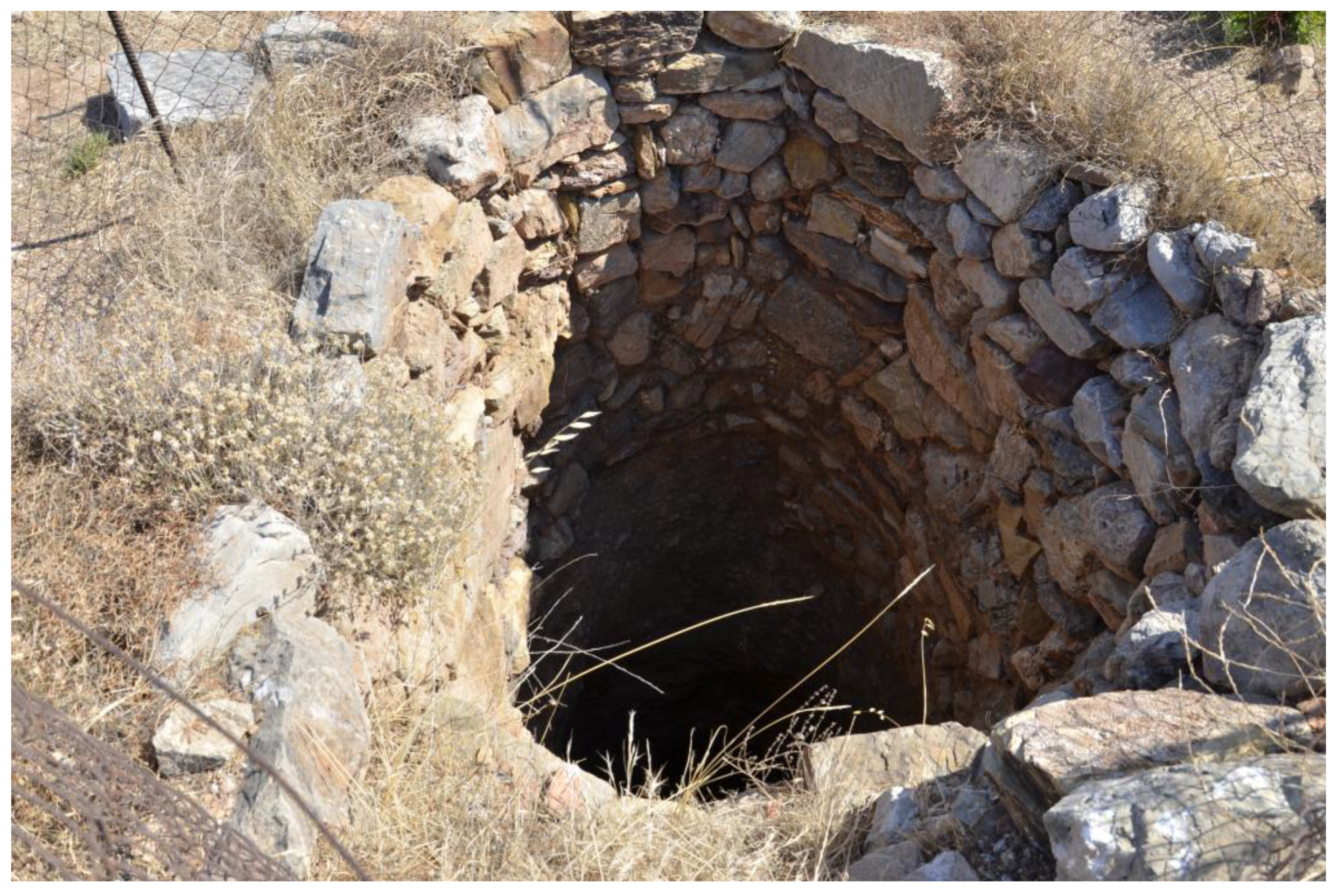

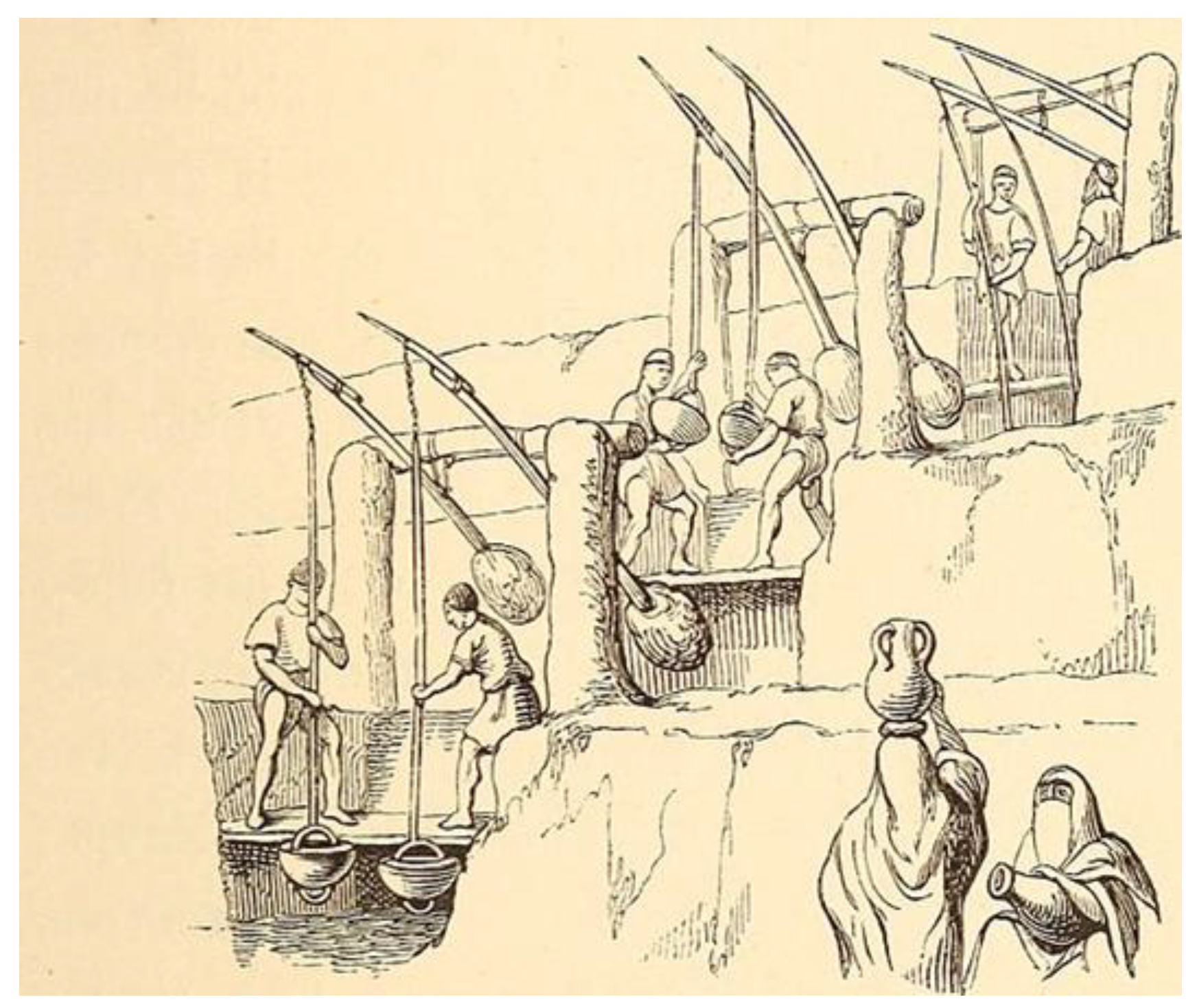
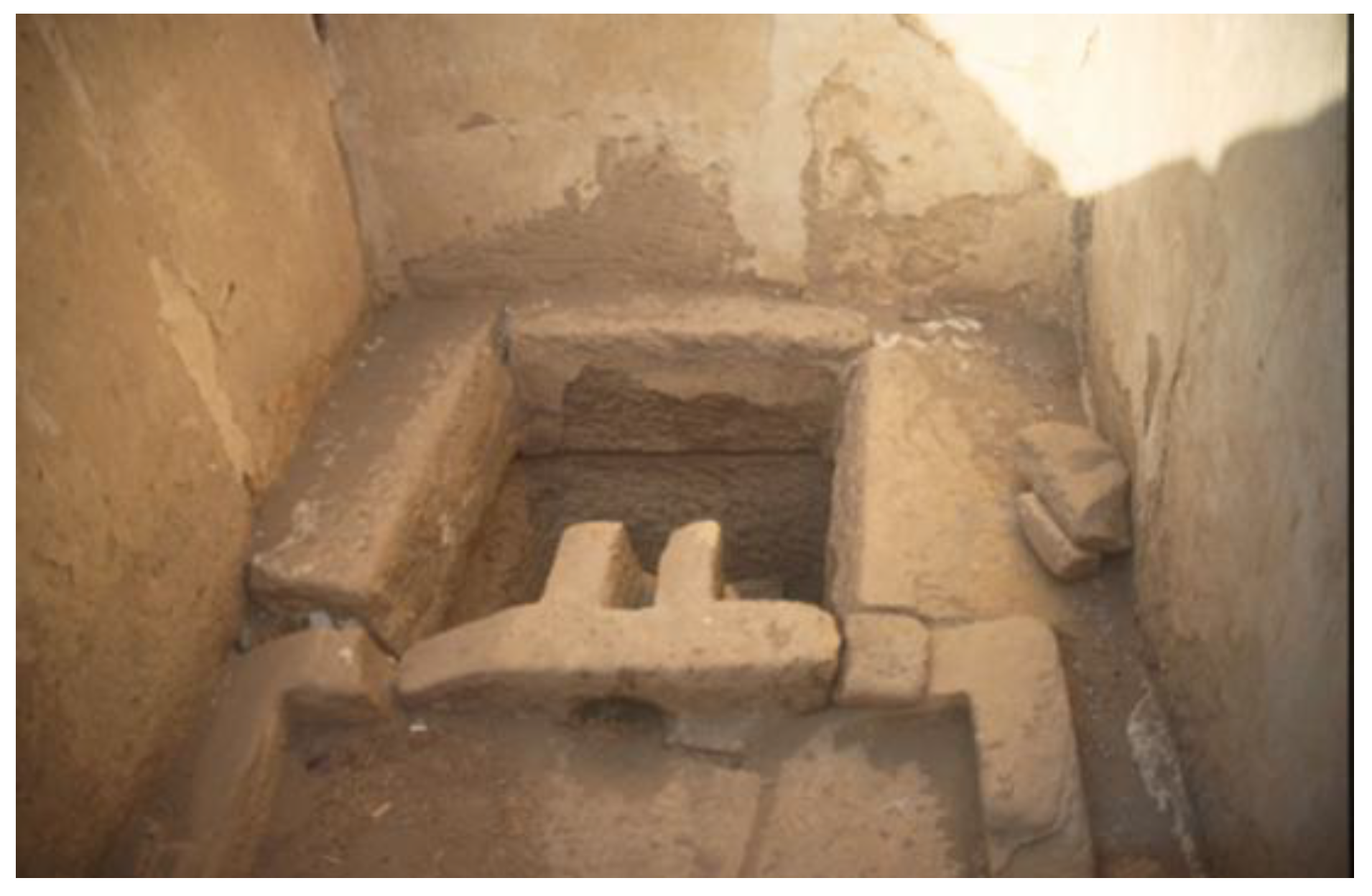
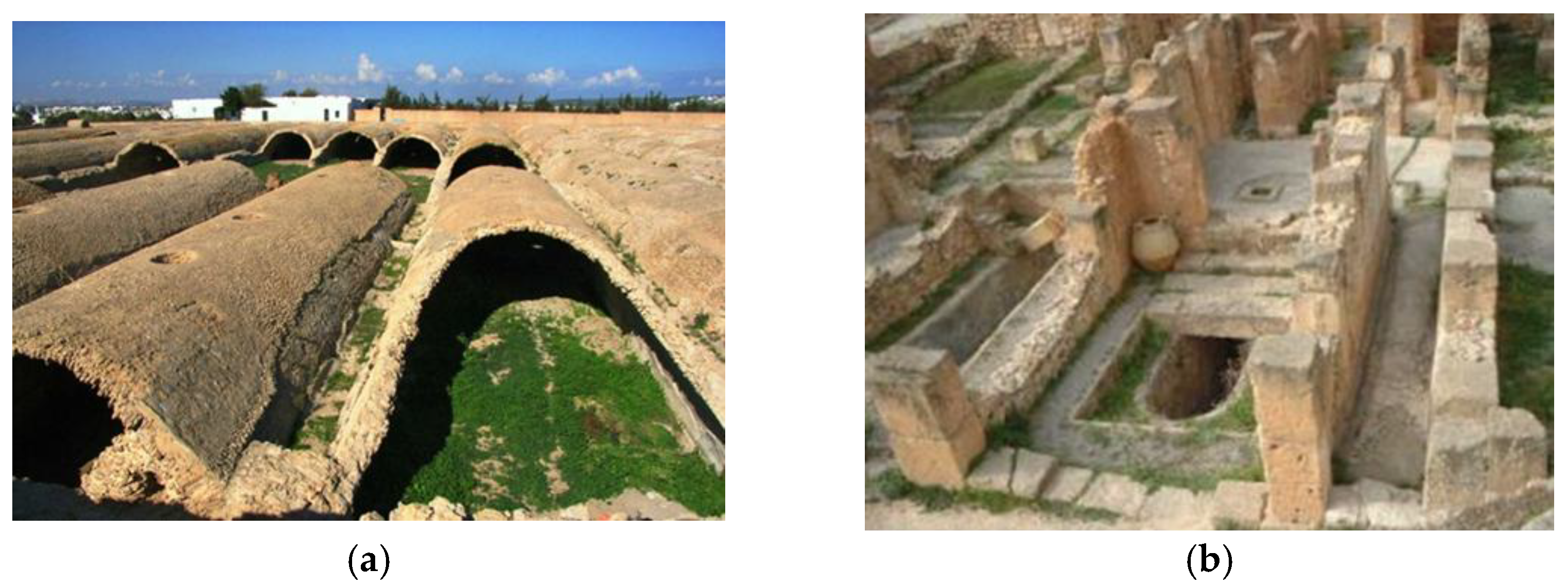
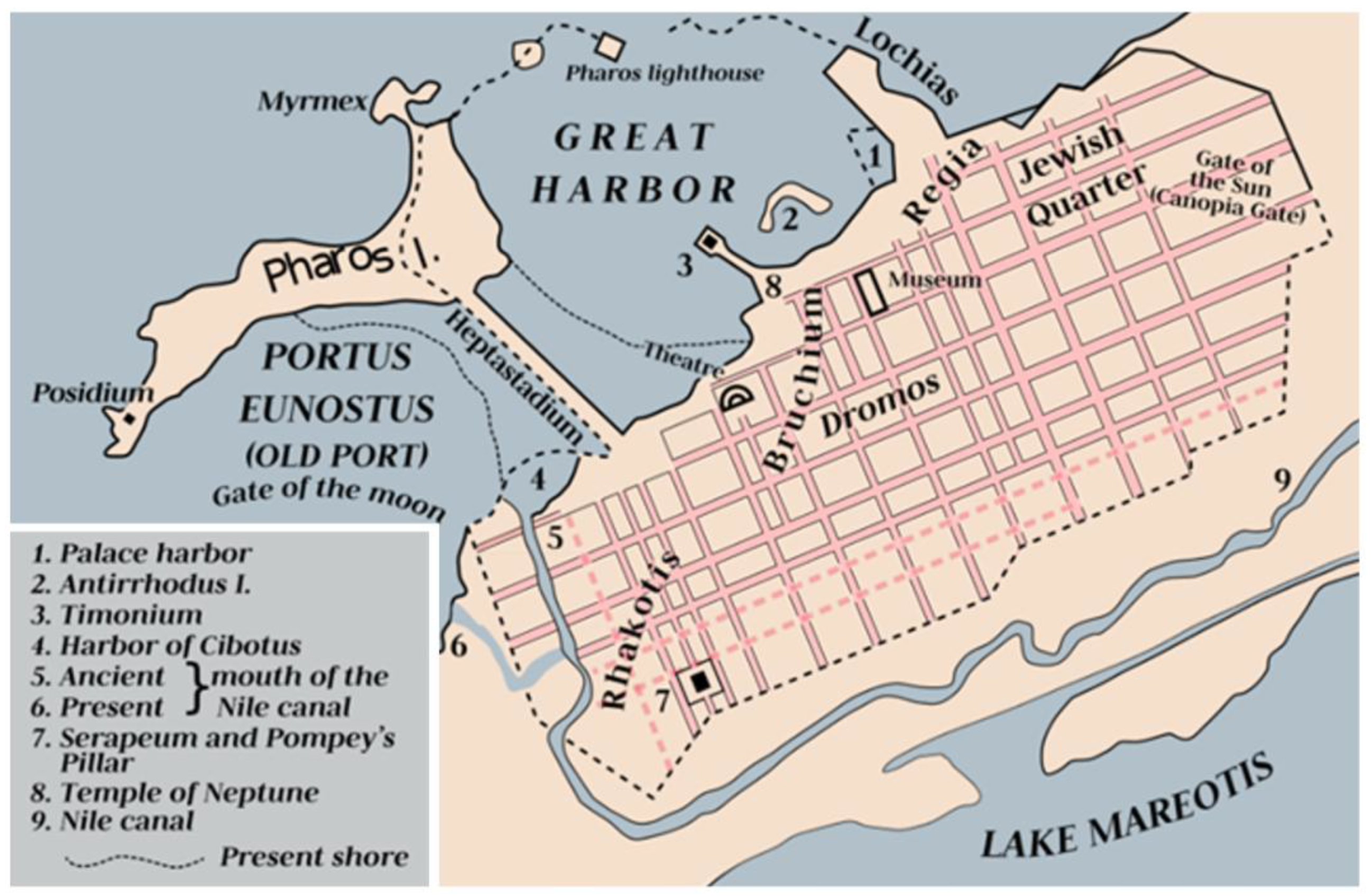

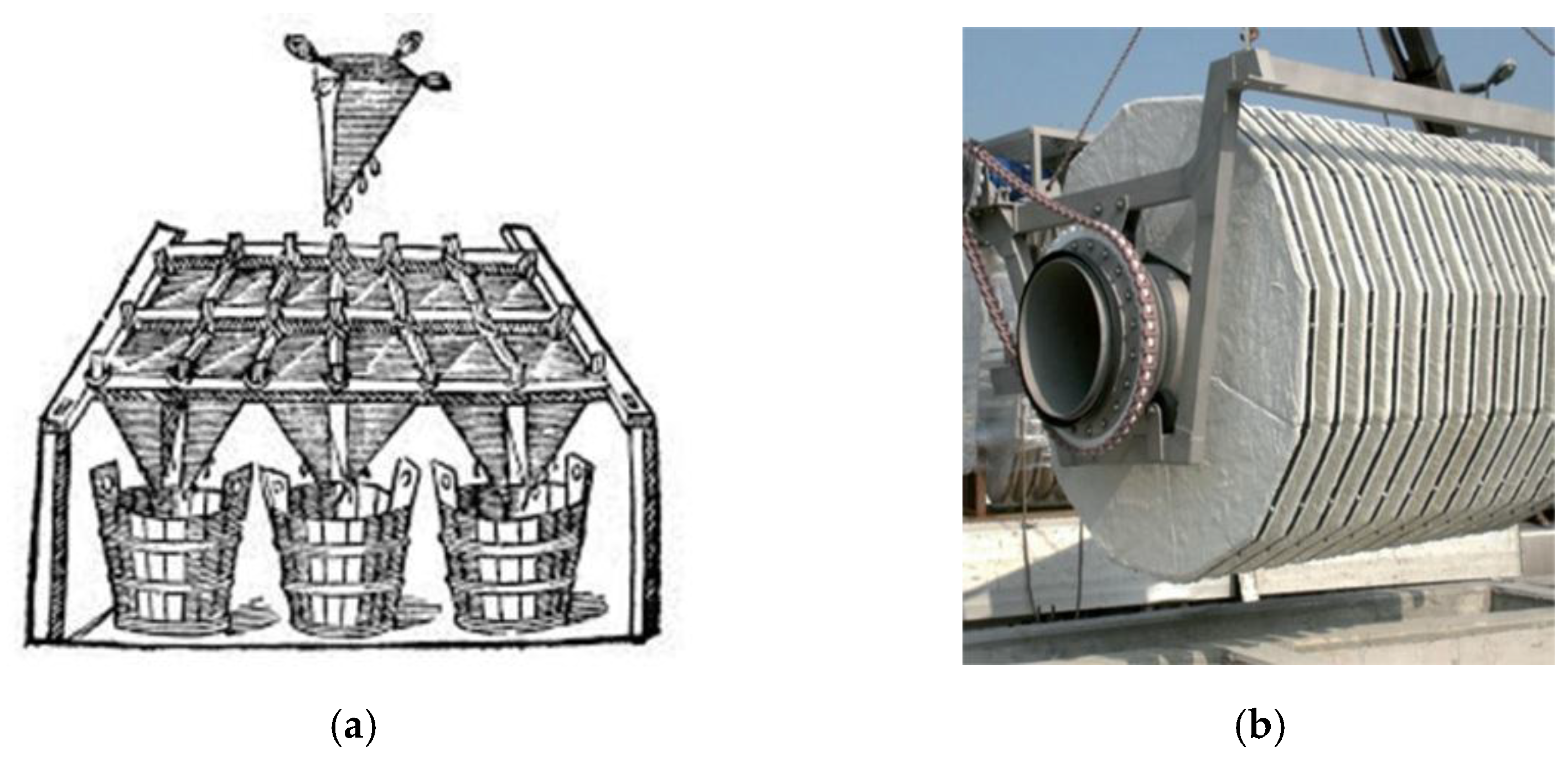
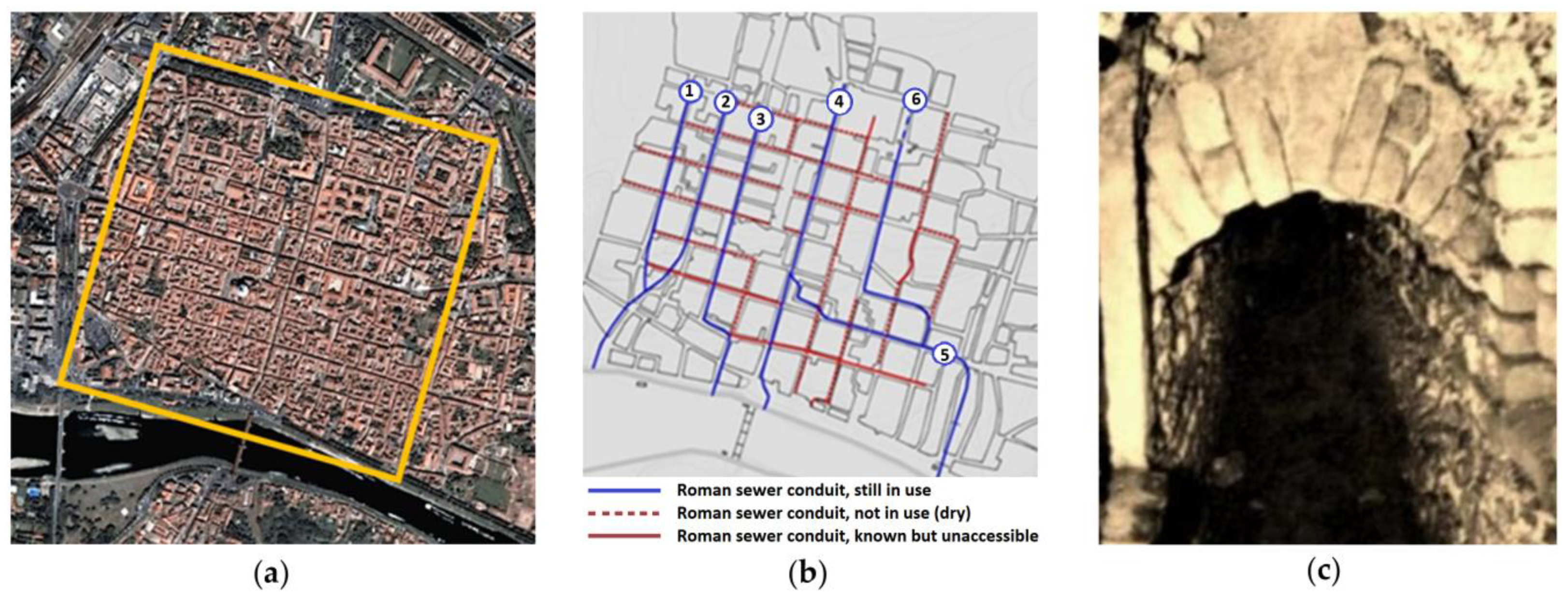



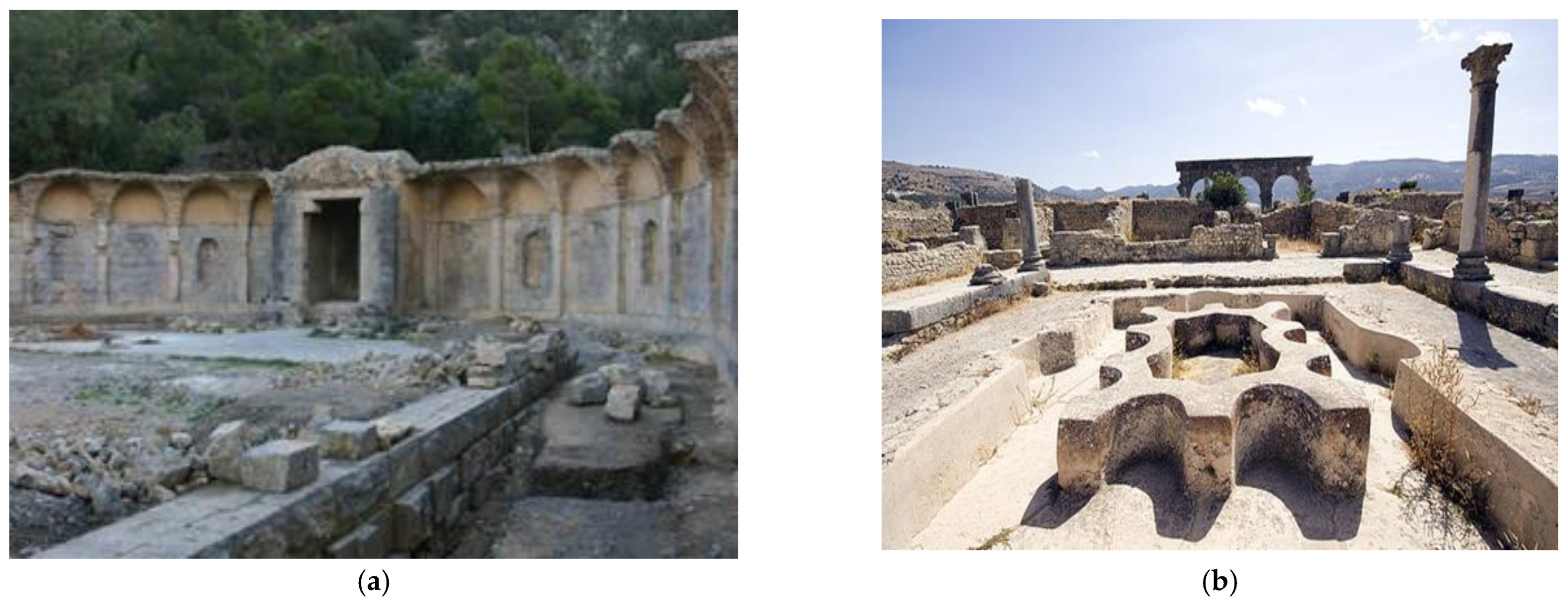
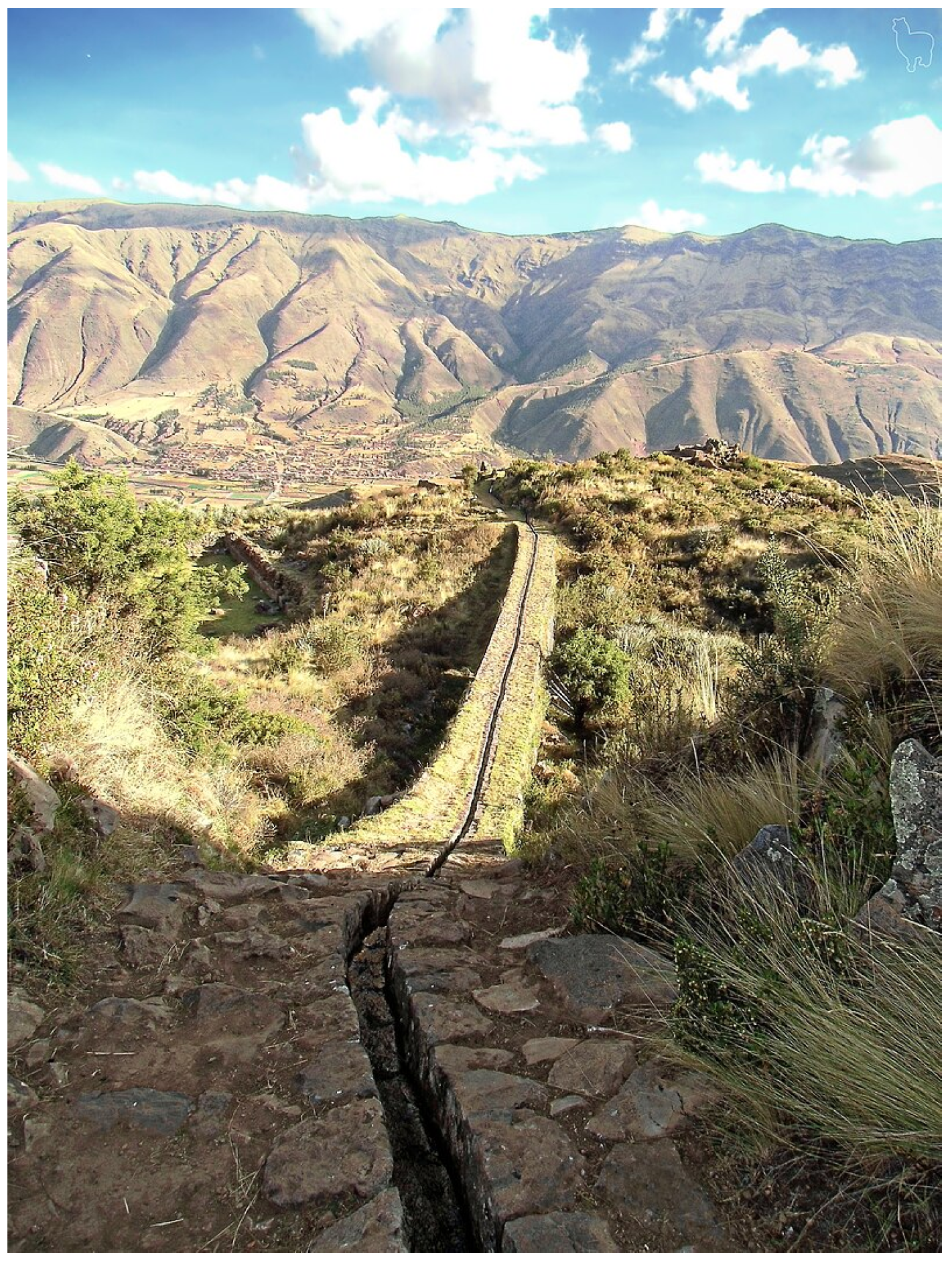
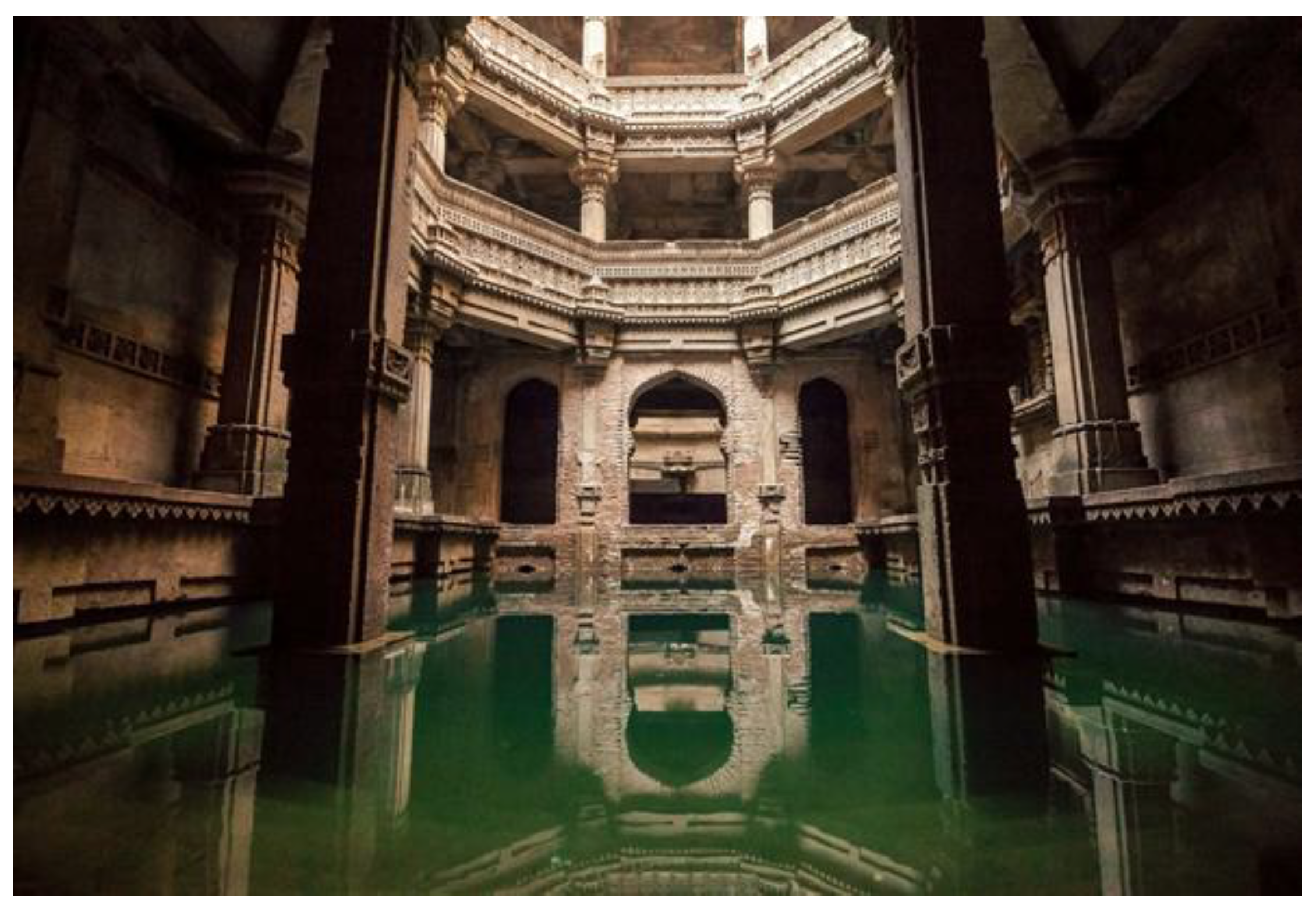

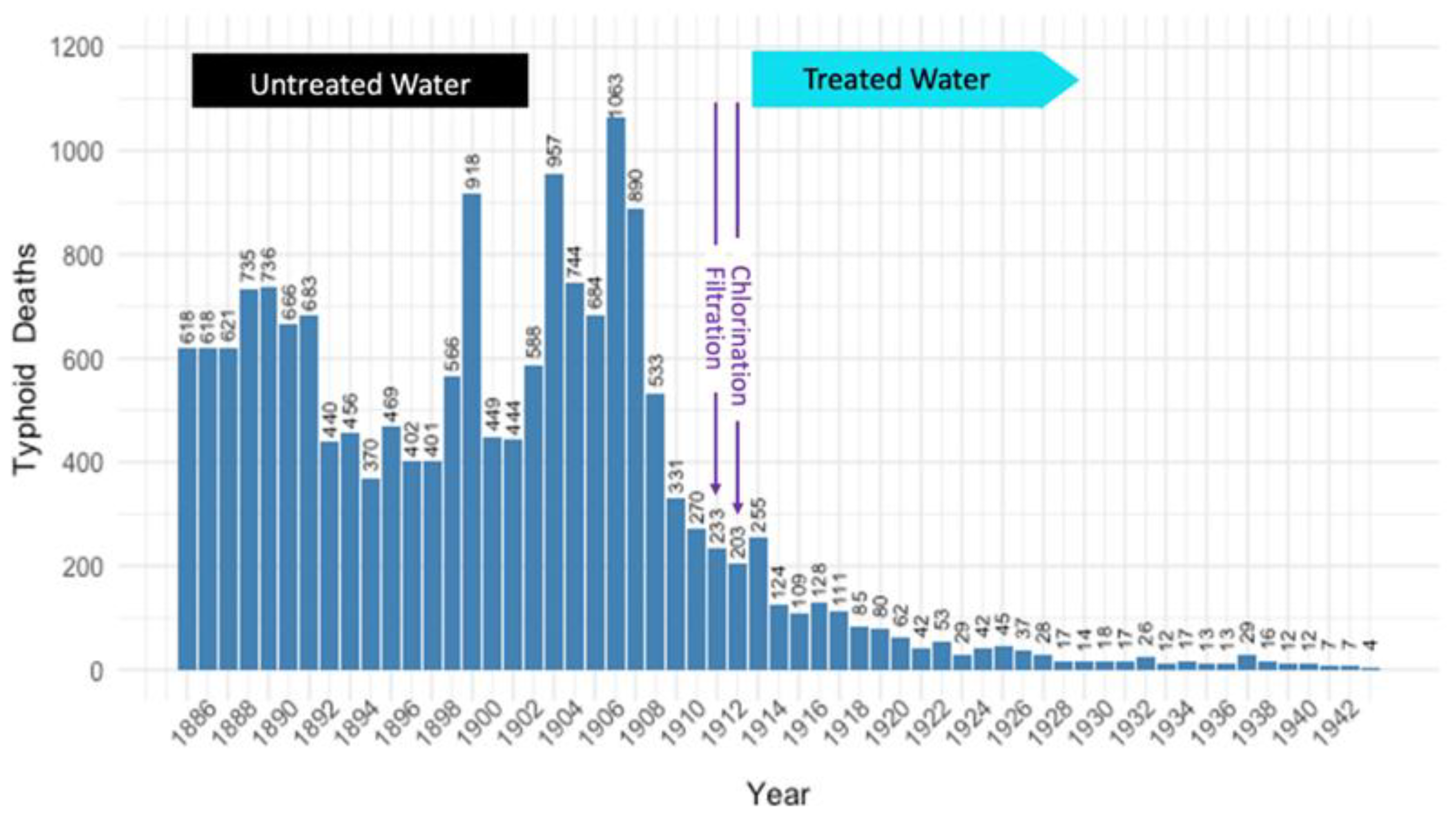
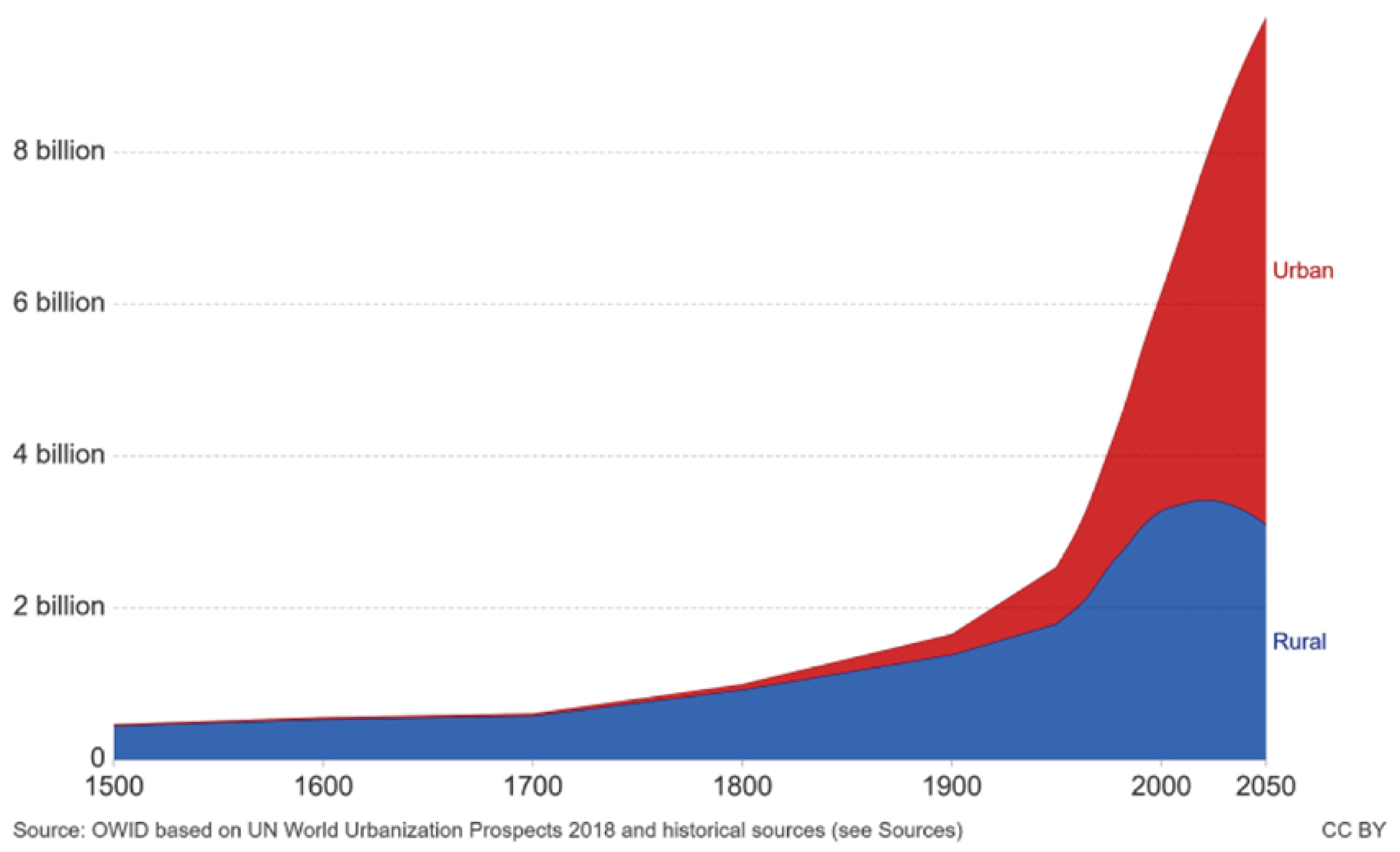
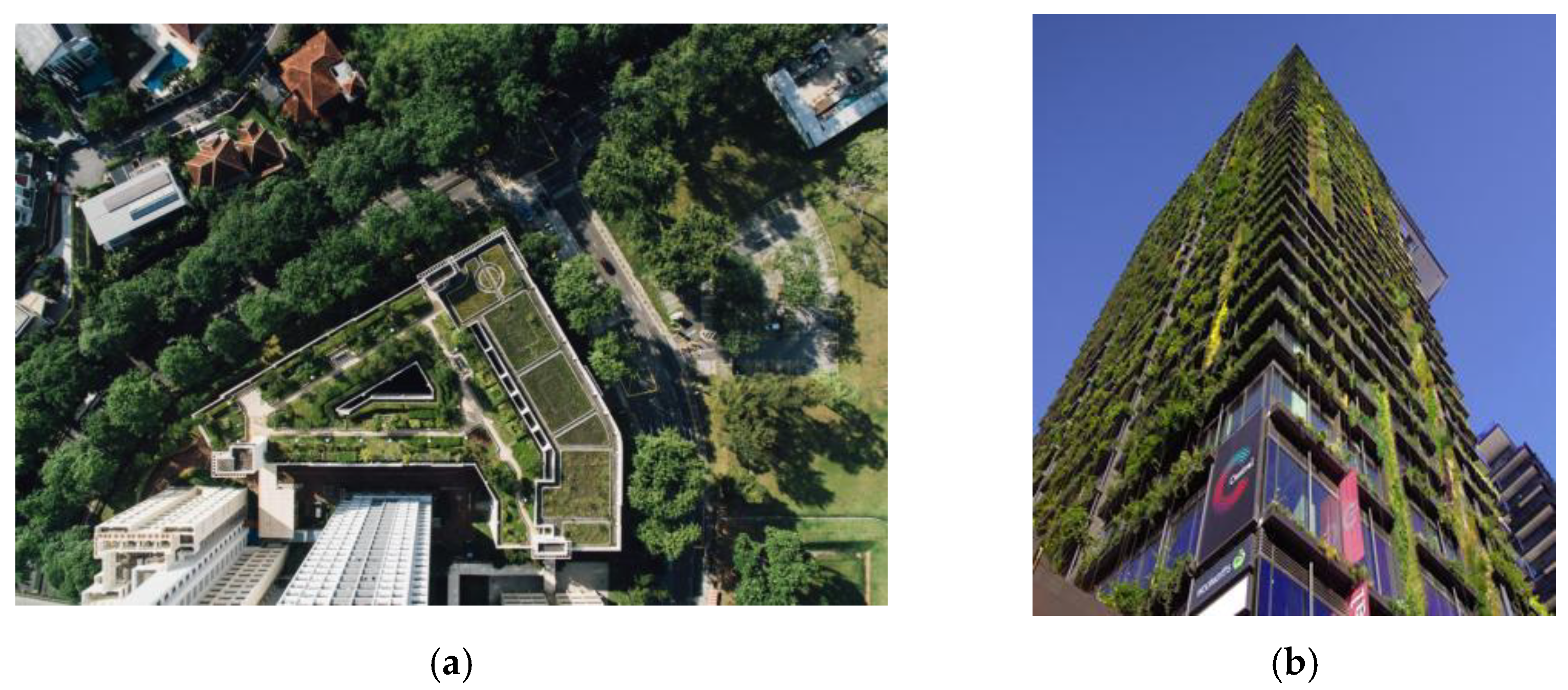
Disclaimer/Publisher’s Note: The statements, opinions and data contained in all publications are solely those of the individual author(s) and contributor(s) and not of MDPI and/or the editor(s). MDPI and/or the editor(s) disclaim responsibility for any injury to people or property resulting from any ideas, methods, instructions or products referred to in the content. |
© 2025 by the authors. Licensee MDPI, Basel, Switzerland. This article is an open access article distributed under the terms and conditions of the Creative Commons Attribution (CC BY) license (https://creativecommons.org/licenses/by/4.0/).
Share and Cite
Angelakis, A.N.; Capodaglio, A.G.; Kumar, R.; Valipour, M.; Ahmed, A.T.; Baba, A.; Güngör, E.B.; Mandi, L.; Tzanakakis, V.A.; Kourgialas, N.N.; et al. Water Supply Systems: Past, Present Challenges, and Future Sustainability Prospects. Land 2025, 14, 619. https://doi.org/10.3390/land14030619
Angelakis AN, Capodaglio AG, Kumar R, Valipour M, Ahmed AT, Baba A, Güngör EB, Mandi L, Tzanakakis VA, Kourgialas NN, et al. Water Supply Systems: Past, Present Challenges, and Future Sustainability Prospects. Land. 2025; 14(3):619. https://doi.org/10.3390/land14030619
Chicago/Turabian StyleAngelakis, Andreas N., Andrea G. Capodaglio, Rohitashw Kumar, Mohammad Valipour, Abdelkader T. Ahmed, Alper Baba, Esra B. Güngör, Laila Mandi, Vasileios A. Tzanakakis, Nektarios N. Kourgialas, and et al. 2025. "Water Supply Systems: Past, Present Challenges, and Future Sustainability Prospects" Land 14, no. 3: 619. https://doi.org/10.3390/land14030619
APA StyleAngelakis, A. N., Capodaglio, A. G., Kumar, R., Valipour, M., Ahmed, A. T., Baba, A., Güngör, E. B., Mandi, L., Tzanakakis, V. A., Kourgialas, N. N., & Dercas, N. (2025). Water Supply Systems: Past, Present Challenges, and Future Sustainability Prospects. Land, 14(3), 619. https://doi.org/10.3390/land14030619












